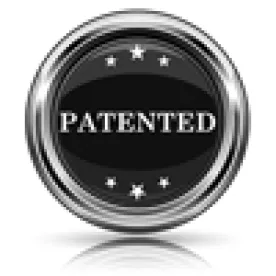Takeaway: The Board is not obligated to deny a petition merely because an examiner had evaluated the art during prosecution of the patent and allowed claims over the art.
In its Decision, the Board granted institution of inter partes review of claim 1, 4, and 7, but not claims 2, 3, 5, 6, 8, and 9 of the ’190 patent.
Patent Owner requested that the Petition be denied because during prosecution of the ’190 patent, the Examiner allowed the claims despite having prior knowledge of prior art with essentially the same teachings as those in the references asserted by Petitioner. The Board declined to exercise its discretion to deny the Petition on this basis in this case.
The ’190 patent relates to compositions of nitrogen mustards, in particular lyophilized bendamustine, which can be used to treat various disease states. Petitioner challenged (1) claims 1-9 as obvious over the Rote Liste and Teagarden; (2) claims 1-9 as obvious over the Rote Liste, Teagarden, and Nuijen; (3) claims 7-9 as obvious over the Rote Liste, Teagarden, Nuijen, and Gust; and (4) claims 4, 5, 7, and 8 as anticipated by the Rote Liste. Petitioner also relied upon the Declaration of Dr. Raj Suryanarayanan.
Petitioner argued that “made from” in claim 4 is directed to lyophilized products, made from the process of lyophilizing the pharmaceutical composition of claim 1. Patent Owner argued that the plain language indicates that “made from” refers to the composition of claim 1. The Board agreed with Petitioner.
Turning to the obviousness challenged of claim 1, Petitioner alleged, relying on the Declaration, that one of ordinary skill would have understood that bendamustine HCl in Rote Liste resulted from the lyophilization of a liquid solution. Petitioner alleged that Teagarden discloses using tert-butanol (“TBA”) to improve the stability of unstable drugs in solution. Patent Owner alleged that Petitioner is using hindsight reasoning and that none of the references identified the problem with the then existing bendamustine/mannitol compositions. The Board noted that references do not need to be combined for the reasons contemplated by the inventor. The Board acknowledged that Petitioner’s argument is supported by evidence. Patent Owner argued that using TBA, as suggested by Teagarden, would have yielded unpredictable results, thereby discouraging the use of TBA. The Board stated that obviousness does not require absolute predictability of success, instead, all that is required is a reasonable expectation of success. The Board concluded that Rote Liste and Teagarden teach all of the limitations of claim 1.
Petitioner argued that it would have been obvious to one of ordinary skill that the amounts disclosed in the Rote Liste of bendamustine HCl and mannitol can be readily achieved by pre-lyophilization concentrations that fall within the recited ranges. Second, Petitioner argued that it would have been obvious to modify the amounts of bendamustine hydrocholoride and mannitol disclosed in Rote Liste to arrive at the concentrations recited in claim 3. The Board disagreed with Petitioner’s hindsight reasoning with respect to claims 2 and 3.
Claim 4 is a product-by-process claim. Because the Board determined that Petitioner had established a reasonable likelihood that it would prevail in showing the composition recited in claim 1 is obvious, the Board concluded that claim 4 would have been obvious by the same reasoning over the Rote Liste and Teagarden.
Regarding claims 5 and 6, and corresponding dependent claims 8 and 9, Petitioner asserted the same reasoning for the recited ranges as claims 2 and 3. Thus, the Board concluded that Petitioner had not met its burden for claims 5, 6, 8, and 9 for the same reasons as claims 2 and 3.
Petitioner alleged that it would have been obvious to a person of ordinary skill that substituting ethanol with TBA in the pre-lyophilization solution would not lead to the formation of additional bendamustine ethylester because, as acknowledged by Patent Owner, bendamustine ethylester is formed only by reaction of bendamustine with ethanol. The Board concluded that Petitioner had established a reasonable likelihood that it would prevail in showing claim 7 is obvious over the Rote Liste and Teagarden.
The Board was unpersuaded by Petitioners arguments regarding the obviousness of claims 2, 3, 5, 6, and 8 over the combination of the Rote Liste, Teagarden, and Nuijen and further in view of Gust for the same reasons as above.
Petitioner argued that the Rote Liste anticipates claims 4, 5, 7, and 8. The Board was persuaded by Petitioner regarding claims 4 and 7, but not claims 5 and 8. The Board noted that while the ’190 patent discloses lyophilates produced with 30% (v/v) TBA, claim 4 does not specify any concentration of TBA. With respect to claim 7, Petitioner argued that a marketed form of bendamustine that appears in a table in the ’190 patent inherently contains less than 0.5% bendamustine ethylester. The Board agreed. However, Petitioner had not established that lyophilizing a solution with the concentration s of bendamustine HCl and mannitol recited in claim 5 necessarily results in the composition disclosed in the Rote Liste. Thus, the Board concluded that Petitioner had not shown a reasonable likelihood of prevailing in showing that the Rote Liste anticipates claims 5 and 8.
AGILA SPECIALTIES INC. v. MYLAN LABORATORIES LIMITED, IPR2015-00503
Paper 10: Decision Instituting, in part, Inter Partes Review
Dated: July 20, 2015
Patent: 8,436,190
Before: Linda M. Gaudette, Jacqueline Wright Bonilla, and Zhenyu Yang
Written by: Yang
Related proceedings: Cephalon, Inc. v. Agila Specialties Inc., Case No. 1:13-cv-02080 (D. Del.); the ’190 patent has been asserted against other entities in district court.



 />i
/>i

